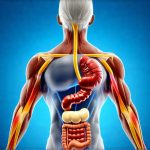The relentless pursuit of peak physical performance often leads athletes and dedicated fitness enthusiasts to push their bodies to the absolute limit. While dedication is admirable, exceeding the body’s capacity for recovery – known as overtraining – can trigger a cascade of physiological consequences that extend far beyond muscle soreness and fatigue. Increasingly, research reveals a complex interplay between strenuous exercise, stress hormones, and the often-overlooked ecosystem within our gut: the gut microbiota. This intricate community of microorganisms plays a pivotal role in nutrient absorption, immune function, and overall health, and it’s remarkably sensitive to disruptions caused by intense physical exertion. Understanding how overtraining impacts this delicate balance is crucial for optimizing performance and safeguarding long-term wellbeing.
The conventional understanding of overtraining has historically focused on musculoskeletal damage, hormonal imbalances (like cortisol elevation), and suppressed immune function. However, the gut microbiota emerges as a critical mediator in these processes. Chronic stress from intense training can profoundly alter the composition and function of the gut microbiome, leading to reduced diversity, increased intestinal permeability (“leaky gut”), and impaired nutrient uptake. This isn’t merely about digestive discomfort; it’s about compromising the fundamental building blocks needed for recovery, adaptation, and sustained athletic performance. The relationship is bidirectional – a healthy gut supports resilience during stress, while overtraining can actively erode gut health, creating a vicious cycle that hinders progress and increases susceptibility to illness. Understanding the role of gut inflammation is key here.
Overtraining & Gut Microbiota Disruption: A Vicious Cycle
Overtraining doesn’t just physically exhaust the body; it generates significant physiological stress. This stress manifests as elevated levels of cortisol, a hormone released in response to perceived threats. While acute cortisol spikes are normal and even beneficial for mobilizing energy during exercise, chronically high cortisol levels wreak havoc on the gut environment. – Cortisol can directly alter gut permeability, loosening the tight junctions between intestinal cells. – This increased permeability allows larger molecules, including bacterial toxins (lipopolysaccharides or LPS), to leak into the bloodstream, triggering systemic inflammation. – Inflammation further disrupts the microbiota composition and exacerbates stress responses, perpetuating the cycle. Furthermore, intense exercise can reduce blood flow to the gut, creating a hypoxic environment that favors the growth of harmful bacteria while suppressing beneficial ones. This shift in microbial balance, known as dysbiosis, is a hallmark of overtraining-induced gut dysfunction. The specific changes observed often depend on individual factors like training regimen, diet, and pre-existing gut health but generally involve a decrease in diversity—a key indicator of a resilient microbiome. A look at gut inflammation can help understand the impact on energy levels.
The consequences of dysbiosis extend far beyond the digestive system. A compromised gut barrier allows for increased systemic inflammation, which impacts muscle recovery, immune function, and even cognitive performance. Beneficial bacteria play crucial roles in producing short-chain fatty acids (SCFAs) like butyrate, propionate, and acetate. These SCFAs are vital for colonocyte health, reducing inflammation, and providing energy to the body. Overtraining-induced dysbiosis reduces SCFA production, diminishing these protective effects. Moreover, alterations in gut microbiota composition can affect neurotransmitter production, potentially leading to mood swings, anxiety, and impaired motivation – all of which further hinder athletic performance and recovery. Essentially, a stressed gut contributes to a stressed athlete. Balancing gut acidity can greatly improve nutrient uptake.
The interplay between the gut and brain—the gut-brain axis—is particularly relevant here. The gut microbiome communicates directly with the brain via several pathways, including the vagus nerve, immune system signaling, and production of neuroactive compounds. Dysbiosis can disrupt this communication, impacting mood, motivation, and even pain perception. This creates a negative feedback loop where compromised gut health exacerbates psychological stress, making it harder to cope with training demands and increasing vulnerability to overtraining symptoms. Restoring gut health therefore isn’t simply about improving digestion; it’s about optimizing the entire physiological system supporting athletic performance and overall wellbeing.
Nutrient Absorption & Overtraining: A Breakdown
Overtraining significantly impairs nutrient absorption through multiple mechanisms, directly linked to the changes in gut microbiota and barrier function discussed earlier. Even with a perfectly planned diet, if your gut isn’t functioning optimally, you won’t be able to effectively utilize the nutrients you consume. – Reduced digestive enzyme production: Stress and inflammation can impair the production of enzymes needed to break down food into absorbable units. – Impaired transport mechanisms: The gut lining relies on specialized transport proteins to ferry nutrients across the intestinal barrier and into the bloodstream. Dysbiosis and increased permeability disrupt these processes. – Competition for nutrients: Harmful bacteria thriving in a dysbiotic gut can actively consume nutrients, leaving less available for the host. This is especially problematic with essential vitamins and minerals crucial for recovery and performance. Understanding how GERD affects appetite is also important here.
Specific nutrient absorption deficiencies commonly observed in overtrained athletes include: – Vitamin D: Critical for immune function, bone health, and muscle recovery; often poorly absorbed due to inflammation and dysbiosis. – Magnesium: Essential for muscle function, energy production, and nerve transmission; absorption can be compromised by stress and gut dysfunction. – Iron: Vital for oxygen transport and energy metabolism; impaired absorption leads to fatigue and reduced performance. – Amino acids: The building blocks of protein, necessary for muscle repair and growth; absorption relies on a healthy gut environment and efficient transport mechanisms. The resulting nutrient deficiencies exacerbate the effects of overtraining, further weakening the immune system, hindering recovery, and increasing risk of injury. Emotional eating can also play a role in digestive issues.
Addressing nutrient absorption requires a multi-pronged approach. First and foremost, reducing training stress and allowing for adequate recovery is essential to allow the gut to heal. Incorporating prebiotic foods (like garlic, onions, bananas) and probiotic-rich foods (like yogurt, kefir, sauerkraut) can help restore microbial balance. However, supplementation should be approached cautiously, as certain probiotics may not survive the harsh environment of a compromised gut. Working with a registered dietitian or sports nutritionist to identify specific nutrient deficiencies and develop a tailored dietary plan is highly recommended. Furthermore, focusing on easily digestible food sources during periods of intense training can minimize digestive burden and maximize nutrient uptake.
Strategies for Gut Health & Recovery
Protecting and restoring gut health should be an integral part of any athlete’s recovery strategy. This goes beyond simply taking probiotics; it requires a holistic approach that addresses the underlying causes of gut dysfunction. 1. Prioritize Adequate Recovery: This is paramount. Implementing rest days, active recovery sessions, and periodization into your training plan will minimize stress on the body and allow the gut to recover. 2. Optimize Dietary Intake: Focus on a whole-food diet rich in fiber, fruits, vegetables, and lean protein. Limit processed foods, sugar, and excessive alcohol consumption, as these can further disrupt the microbiota. Consider incorporating fermented foods into your diet to support microbial diversity. 3. Manage Stress Levels: Chronic stress exacerbates gut dysfunction. Explore stress-reducing techniques like mindfulness, meditation, yoga, or spending time in nature. Considering how hormonal birth control affects digestion can also be beneficial.
Beyond lifestyle modifications, certain supplements may offer additional support for gut health during periods of intense training. – Glutamine: An amino acid that helps repair and strengthen the intestinal barrier. However, supplementation should be used cautiously and under professional guidance. – Zinc Carnosine: A compound shown to protect the stomach lining and reduce inflammation. – Digestive Enzymes: Can aid in breaking down food and improving nutrient absorption, particularly if digestive function is compromised. It’s crucial to remember that supplements are not a substitute for a healthy diet and lifestyle. They should be used as adjuncts to support overall gut health and recovery.
Finally, personalized testing can provide valuable insights into your individual gut microbiome composition and identify specific deficiencies or imbalances. Stool analysis tests can reveal the diversity of your microbiota, the presence of harmful bacteria, and levels of key metabolites like SCFAs. This information can help tailor dietary interventions and supplement recommendations to optimize gut health and enhance athletic performance. The emerging understanding of the gut-athlete connection underscores the importance of viewing recovery not just as a period of rest but as an active process of restoring physiological balance—with gut health at its core. By prioritizing gut wellbeing, athletes can unlock their full potential and achieve sustained success without compromising their long-term health.


















